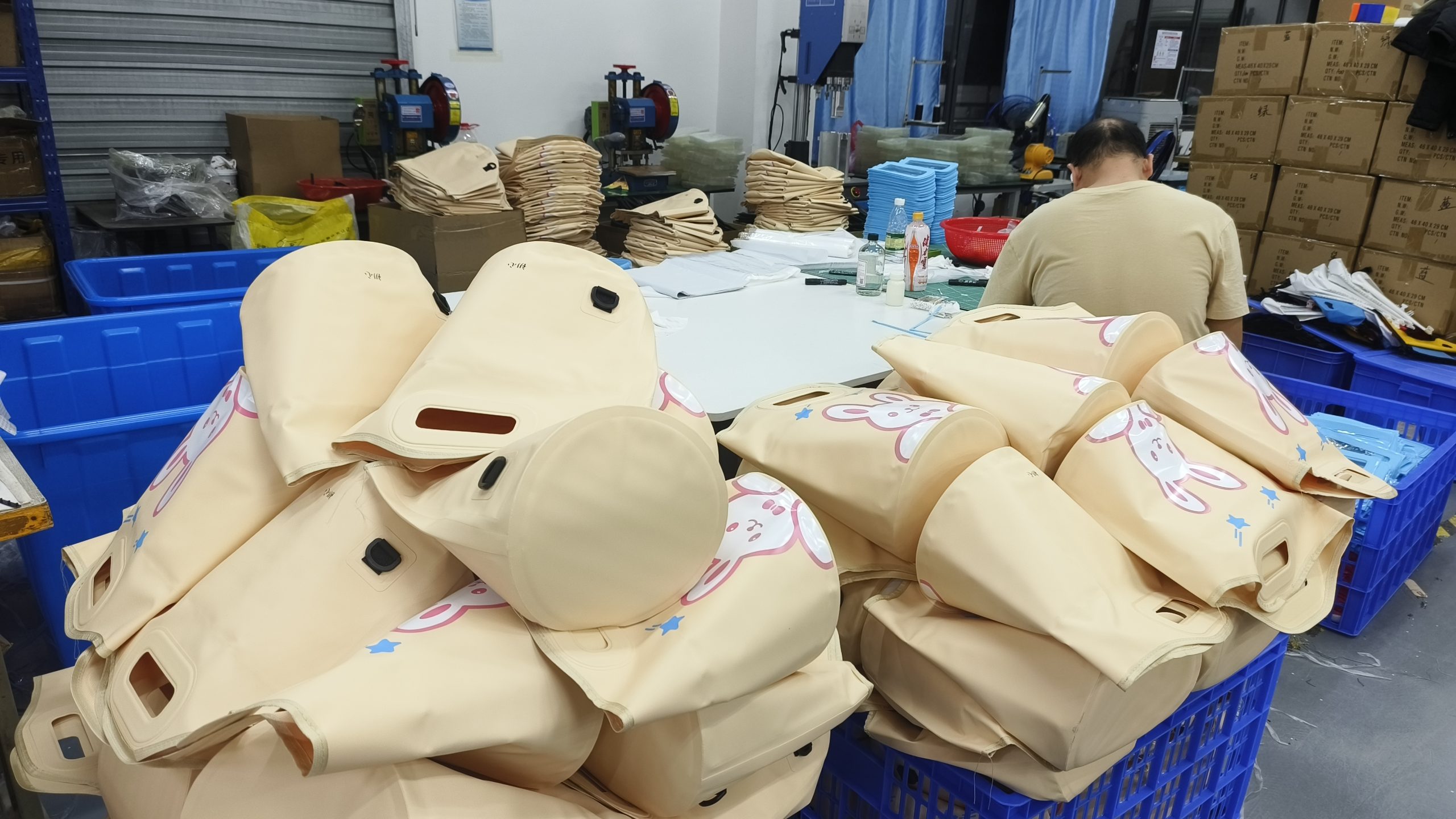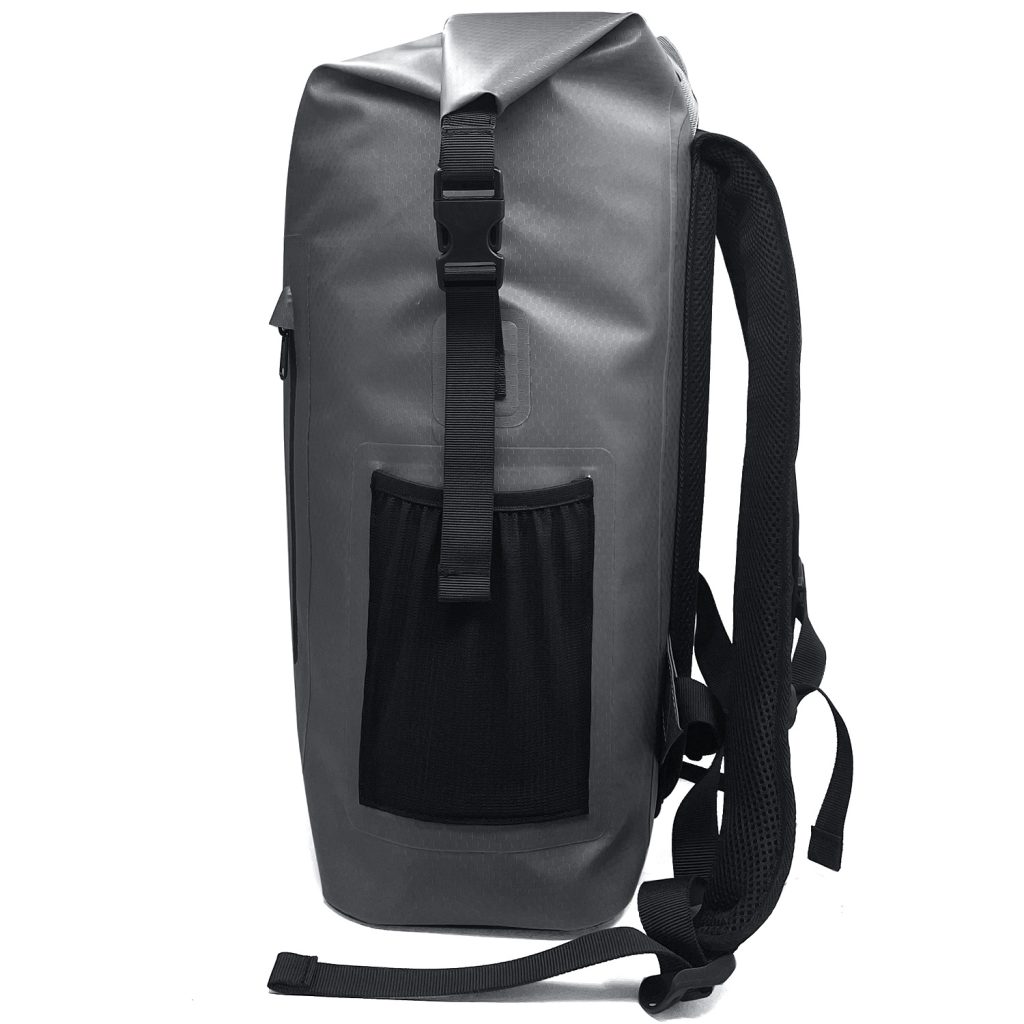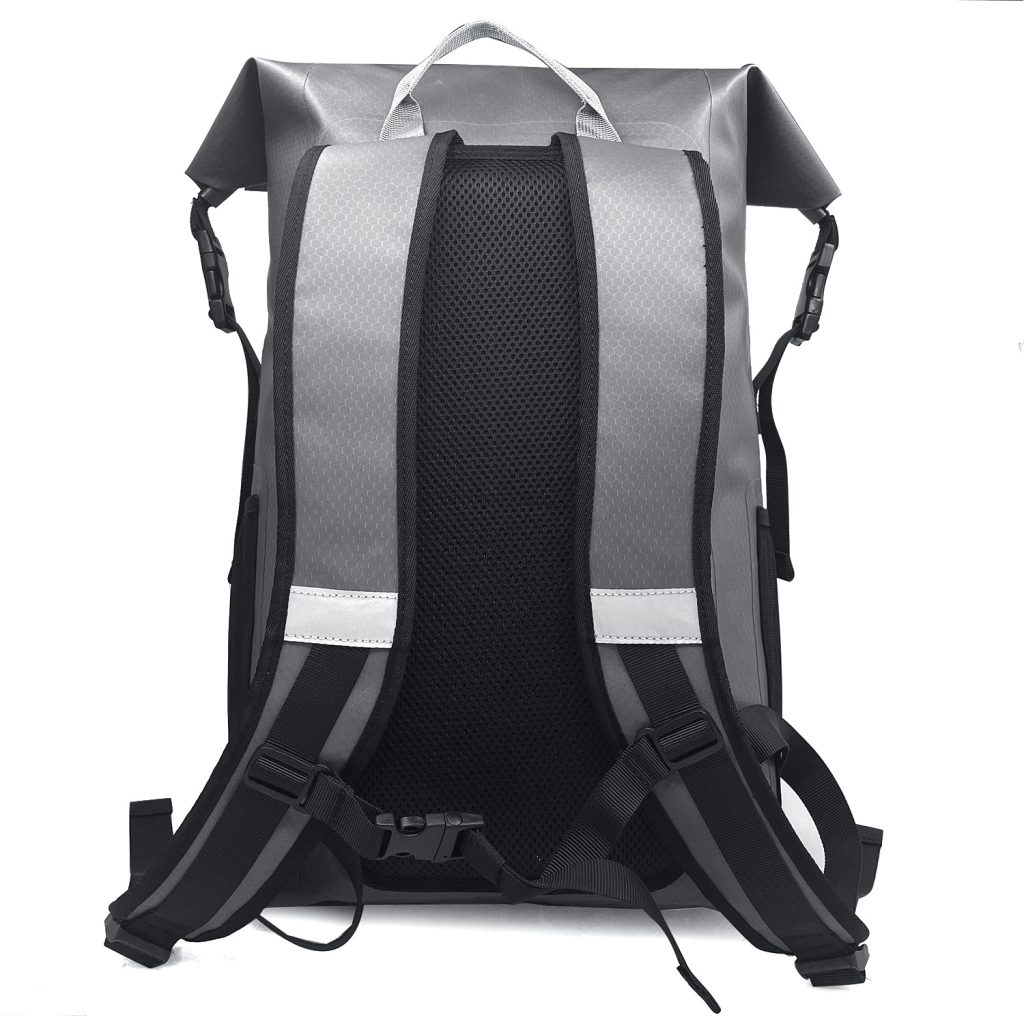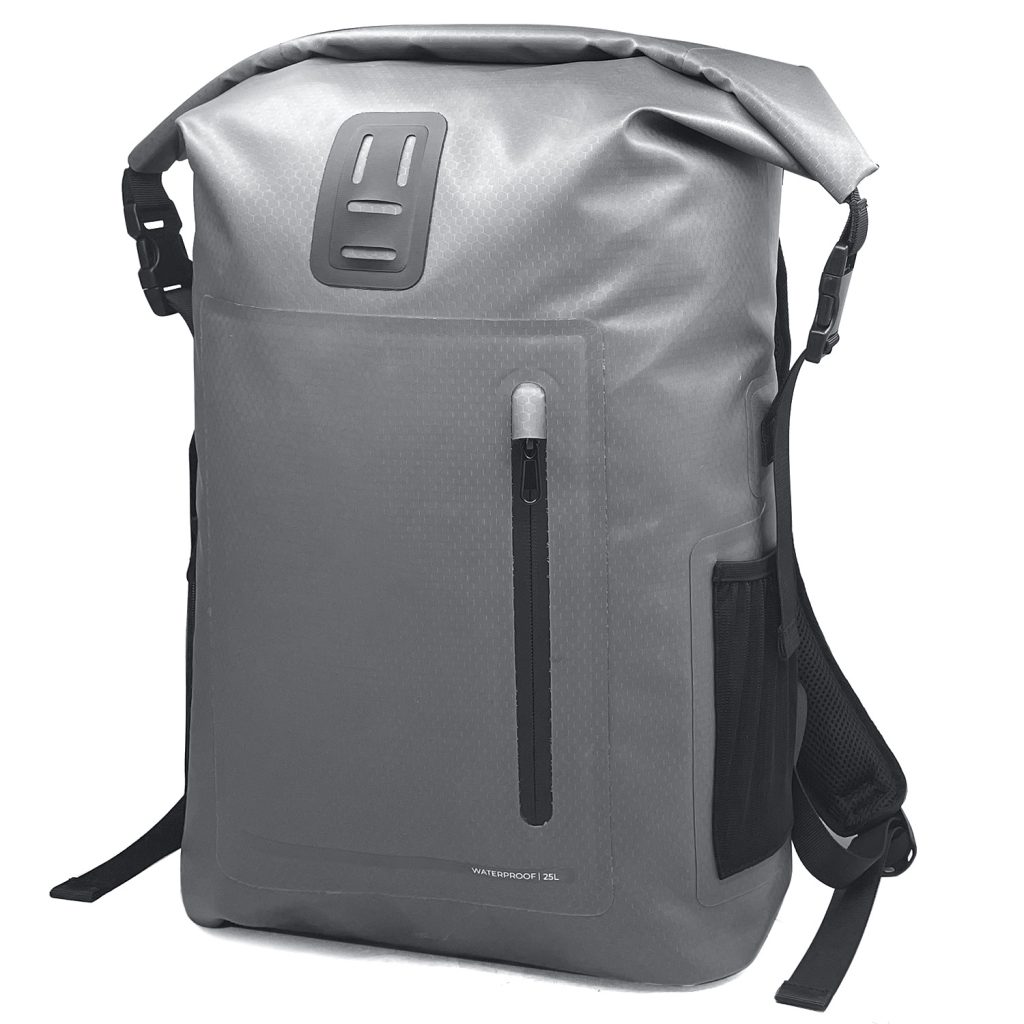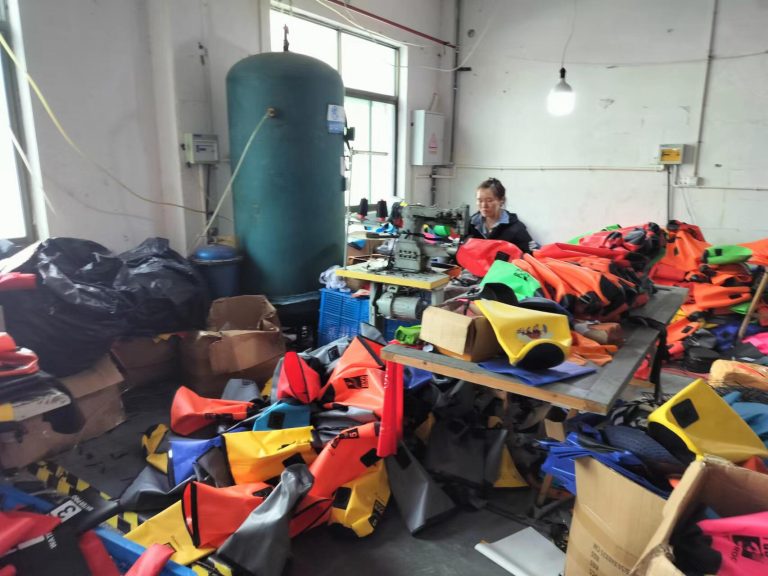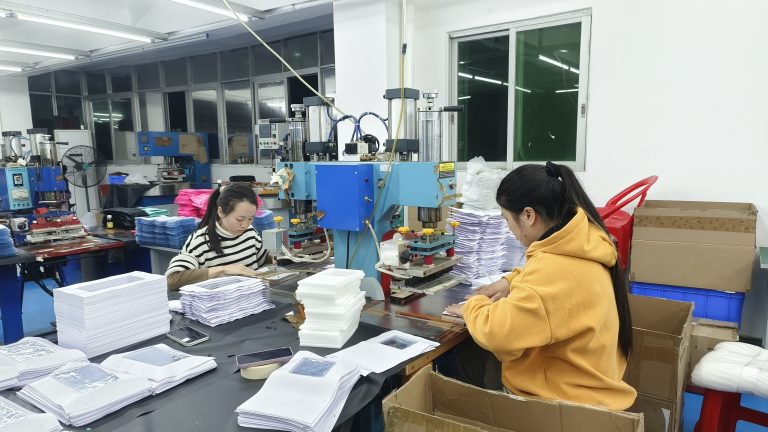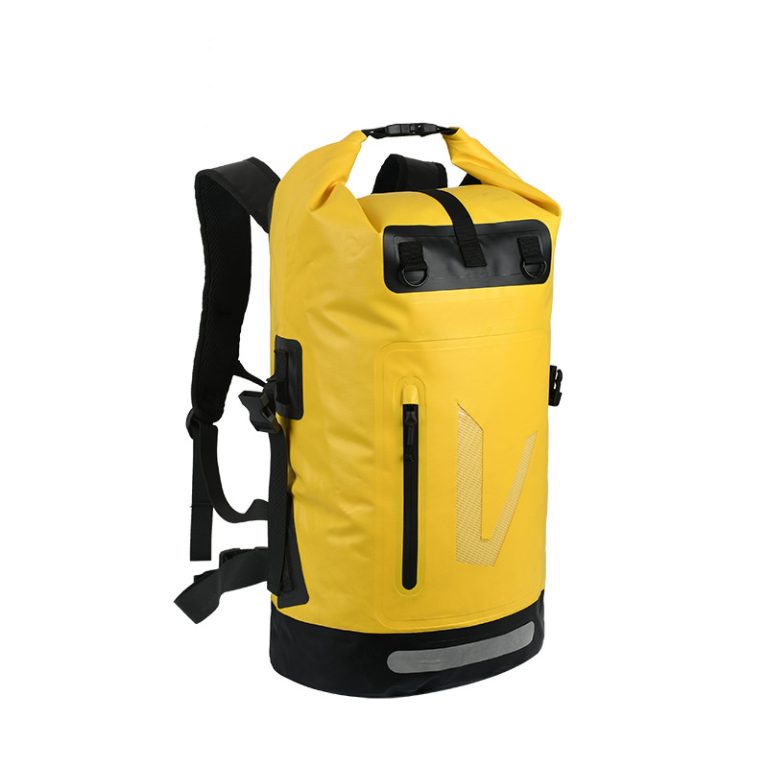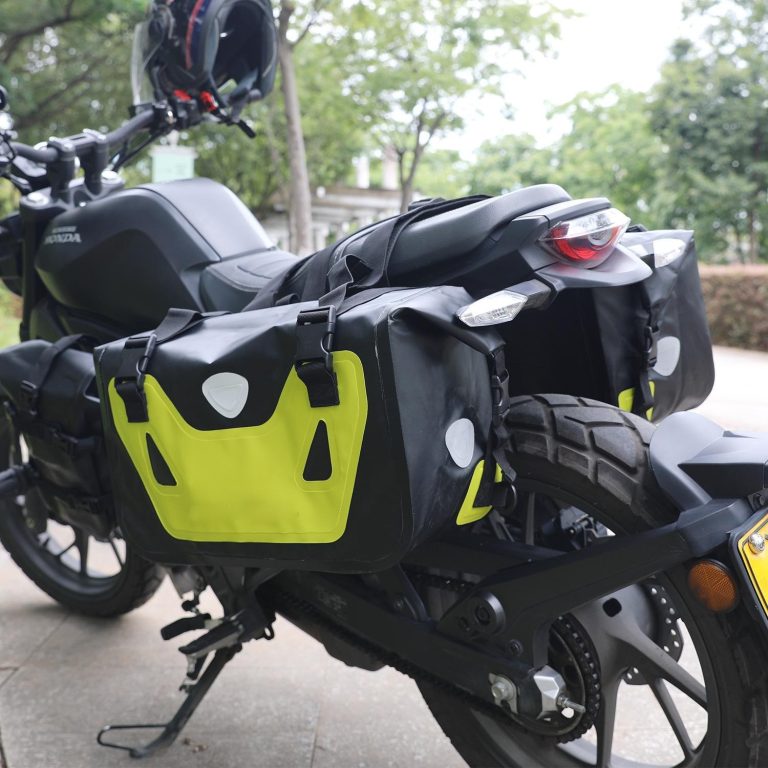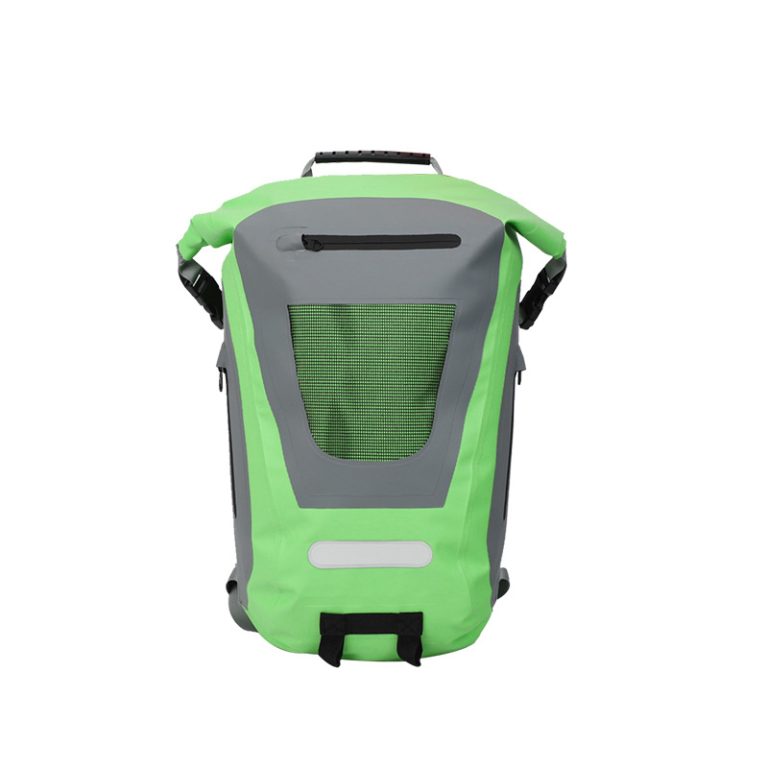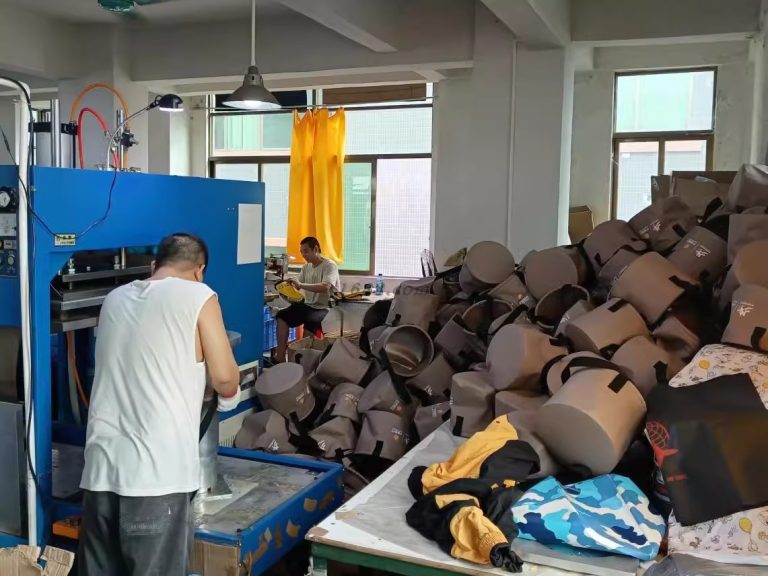When evaluating the source factories of outdoor waterproof bags and swimming bags, production capacity is a key consideration factor, which directly affects whether the factory can meet market demand and the timeliness of order delivery. Production scale is one of the important indicators to measure the strength of a factory. Large scale factories usually have more complete production facilities and richer human resources, which means they can undertake larger quantities of orders. For example, some large source factories have modern production workshops covering thousands of square meters, with multiple production lines operating simultaneously, capable of accommodating hundreds of skilled workers for division of labor and efficient completion of various waterproof bag production tasks. On the other hand, small factories may be unable to deliver goods on time due to space and personnel limitations when facing larger orders. The advanced level of equipment cannot be ignored. Advanced production equipment can not only improve production efficiency, but also enhance the stability of product quality. For example, using automated cutting equipment can accurately cut various waterproof materials, reducing manual errors; Advanced sewing equipment ensures even and secure stitching, enhancing the durability of waterproof bags. Some factories equipped with hot press bonding technology can better achieve sealing treatment of waterproof bags and improve their waterproof performance. However, outdated equipment may lead to frequent malfunctions during the production process, affecting production progress and making it difficult to ensure product consistency and high quality. The annual output is also an important basis for judging the production capacity of a factory. By understanding the annual production data of the factory in the past few years, one can roughly estimate its future production potential. The stable and increasing annual output indicates that the factory is operating well and has the ability to respond to market changes. For example, a factory with an annual output of hundreds of thousands of outdoor waterproof bags and swimming bags is more capable of ensuring sufficient supply during peak market demand periods to meet customers’ urgent order needs. Taking into account factors such as production scale, advanced equipment, and annual output, it helps to comprehensively evaluate the production capacity of the source factory, thereby providing strong support for selecting reliable partners. Quality control is a key link in ensuring the quality of outdoor waterproof bags and swimming bags, which is related to the reputation of the factory and the competitiveness of the products in the market. The quality management system is the core element for measuring the level of quality control in a factory. Factories with internationally recognized quality management system certifications, such as ISO 9001, often follow a rigorous and standardized quality management process. From raw material procurement, production process monitoring to finished product factory inspection, each link has clear standards and operating specifications. This means that the factory is more scientifically and orderly managed, which can effectively reduce the defect rate and ensure the stability of product quality. Factories without a sound quality management system may lack standardization and normalization in their production processes, leading to fluctuations in product quality. The product testing process is an important line of defense to ensure product quality. Legitimate source factories usually set up multiple inspection checkpoints. Before the raw materials are put into storage, strict testing will be carried out on various waterproof materials purchased to ensure that their performance indicators meet production requirements, such as checking whether the thickness, strength, water resistance and other parameters of PVC, TPU and other materials meet the standards. During the production process, semi-finished product sampling will be carried out, with a focus on inspecting key aspects such as the sewing process and sealing treatment of waterproof bags, checking whether the stitching is firm and the sealing is tight, and promptly discovering and correcting potential quality problems. After the completion of the finished product, a comprehensive inspection will be conducted, including visual inspection, size measurement, waterproof performance testing, etc. Only products that pass all testing items will be allowed to enter the packaging process and flow into the market. The product qualification rate is a visual data reflecting the effectiveness of factory quality control. A higher pass rate indicates that the factory’s quality control measures are effective and the product quality is reliable. Generally speaking, the qualification rate of high-quality outdoor waterproof bags and swimming bags from source factories should reach over 95%. The factory that consistently maintains a high compliance rate not only demonstrates its strict control over quality, but also reflects the maturity and stability of its production process. On the contrary, if the product qualification rate of a factory remains at a low level for a long time, such as below 90%, it indicates that there may be significant problems in production management, quality testing, and other aspects. Choosing to cooperate with such a factory may face more after-sales problems and quality risks. By conducting in-depth inspections of the factory’s quality management system, product testing process, and qualification rate, buyers can better assess the factory’s quality control capabilities and select the source factory that can provide high-quality outdoor waterproof bags and swimming bags.
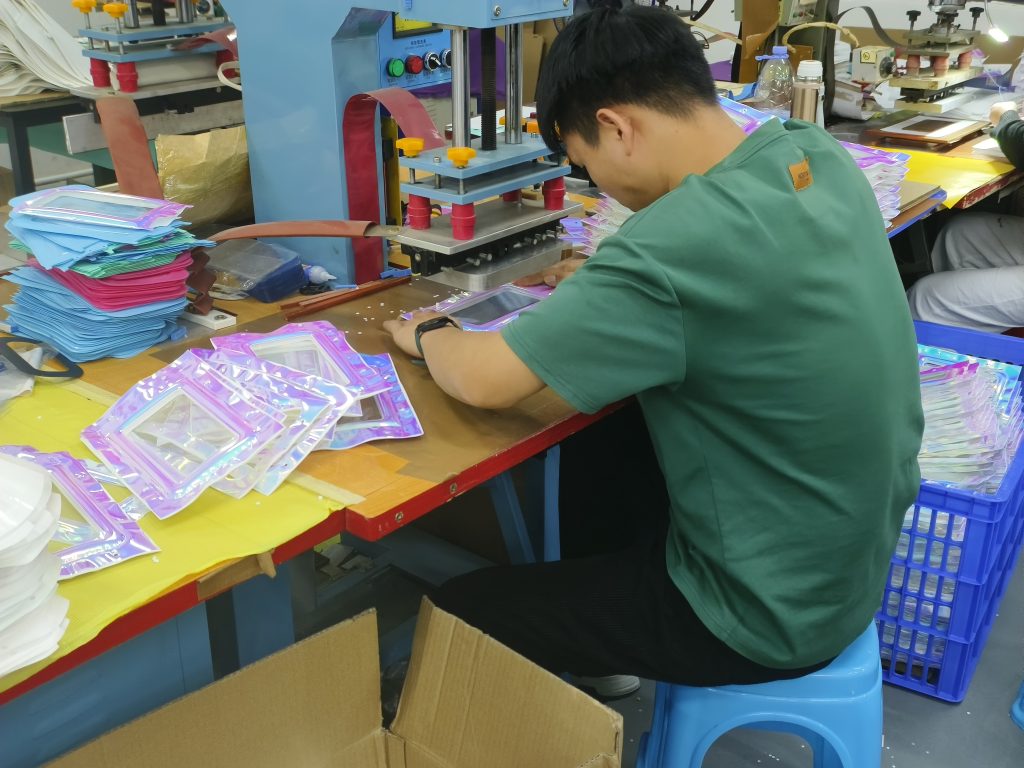
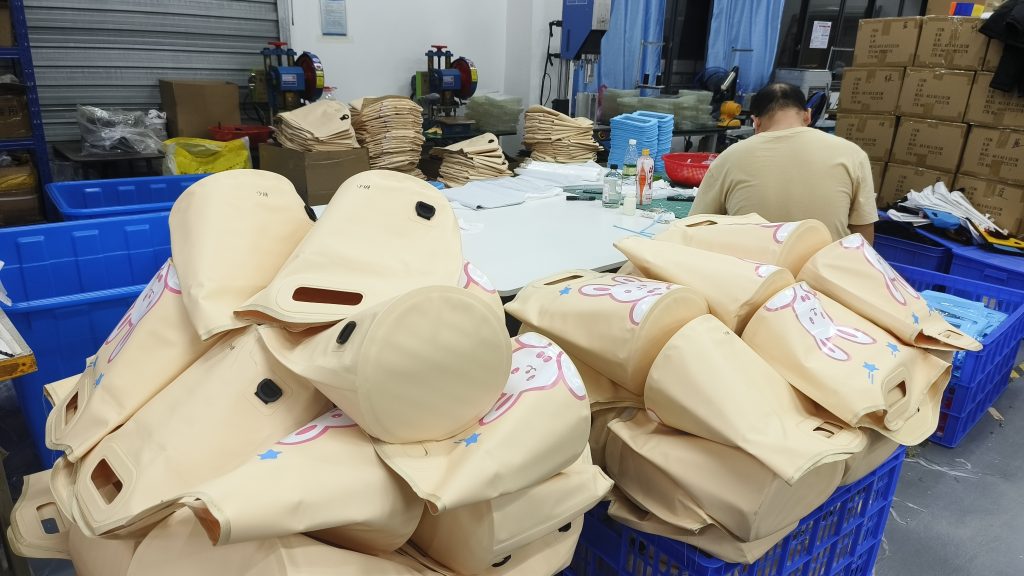
A key design feature of professional swimming bags with dry wet separation is their dry wet separation function. Considering that swimsuits, goggles, towels, and other items may contain a large amount of moisture after swimming, mixing them with other items can easily wet dry items such as mobile phones, wallets, and changing laundry. For this reason, many swimming bags will set up dedicated dry wet separation areas. Some use independent waterproof compartments, which are designed with sealed zippers or waterproof flip covers to completely separate wet and dry items; Some use physical structures, such as setting up upper and lower layers inside the bag, placing damp items on the lower layer and dry items on the upper layer, and separating them with a waterproof board in the middle to ensure that moisture does not penetrate into the upper area, effectively protecting other items inside the bag from moisture. Reasonable storage compartments are usually provided for swimming bags to meet the needs of swimmers carrying various items. In addition to the dry wet separation area mentioned above, there will also be multiple pockets of different sizes and functions. For example, setting up small pockets on the outside of the bag for easy placement of small items such as keys and cards, and convenient access; There is a large main storage area inside, which can be used to place larger items such as clothing and bath towels; Some swimming bags are specially designed with independent small compartments for storing swimming goggles and swim caps to prevent these fragile items from being squeezed and deformed; Some high-end swimming bags even come with a dedicated area for placing tablets or books, making it convenient for swimmers to read or entertain while resting. The portability design takes into account that swimmers may need to move frequently, from the changing room to the edge of the pool, and even to the shower room. Swimming bags are designed with great emphasis on portability. On the one hand, the handle of the bag is usually made of soft and non slip materials, which will not cause excessive pressure on the hands even when lifted for a long time; On the other hand, many swimming bags are equipped with adjustable shoulder straps, making it convenient for users to adjust the length according to their own needs. They can be carried on one shoulder or crossbody, reducing the burden on the hands. In addition, some swimming bags are designed to be compact in overall shape, with a small volume but sufficient capacity, making them easy to carry and store without taking up too much space. Balancing durability and waterproofness is crucial for swimming bags as they frequently come into contact with water and humid environments. In terms of material selection, high-strength and wear-resistant fabrics such as nylon are often used. These fabrics not only resist friction and pulling in daily use, but also have certain waterproof performance. At the same time, the zippers, buckles, and other accessories of the bag have been carefully selected, using waterproof and rust proof materials to ensure that they can still be used normally in humid environments without zipper jamming or buckle rusting and damage. Moreover, the stitching of the bag body is usually treated with waterproofing to prevent moisture from seeping into the bag through the gaps, ensuring the dryness and safety of the items inside the bag in all aspects. Personalized design logo printing. Numerous source factories provide customers with diverse logo printing services to meet different brand image display needs. Screen printing is a common method that can achieve rich color and clear pattern presentation of logos, especially suitable for printing large areas and simple graphics. The cost is relatively low, and it is a good choice for customers with limited budgets who want to highlight their brand identity. Heat transfer printing technology can accurately reproduce complex logo designs, whether it is gradient colors or fine lines, they can be perfectly presented. The printed logo has a soft texture, high adhesion with waterproof packaging material, and is not easy to fall off. It is commonly used for brand customization with high requirements for logo quality. Embroidery technology adds a delicate and three-dimensional feel to the logo, making the brand logo more high-end and atmospheric, with strong durability, suitable for customers who pursue unique styles and value quality. However, embroidery technology is relatively time-consuming and the cost may be slightly higher. In terms of color customization, factories usually provide a wide range of color cards for customers to choose from. Basic color schemes such as classic black, white, and gray are always a stable and versatile choice, suitable for various brand images, and have high market acceptance. Bright and lively colors such as bright red, blue, yellow, etc. can make waterproof bags stand out among many products, attract young consumer groups, or be customized for specific theme activities. For customers who pursue individuality and fashion, some unique gradient colors, metallic colors, or trendy colors can also be included in the customization range. Some factories also support Pantone color matching to ensure that customized colors are highly consistent with the brand’s standard colors, maintaining the unity of the brand’s visual image. In addition, some factories can also adjust colors based on samples or color samples provided by customers, maximizing the satisfaction of customers’ personalized color needs. In addition to logo printing and color selection, some strong source factories also allow customization of waterproof bag styles. Customers can adjust the size of waterproof bags according to the needs of their target market, such as increasing or decreasing the capacity of outdoor waterproof bags, to meet the equipment carrying needs of different outdoor activity scenarios; Or change the design of the swimming bag to make it more compact and portable, or add more functional pockets. In terms of detailed design, customers can also make personalized requests, such as adjusting the carrying system of outdoor waterproof bags, adding or reducing certain storage compartments; For swimming bags, the layout of the dry wet separation area can be changed, or special hooks, buckles, and other accessories can be added to facilitate hanging items. This in-depth style modification and customization service allows customers to create unique products that meet market demands.
The minimum order quantity for logo printing varies greatly among different factories for customers who only need to customize logo printing. Some small factories may set the minimum order quantity relatively low, around 50-100 pieces, in order to attract customers and expand their business. This is more friendly for some start-up brands or small businesses, as they can customize waterproof bags with brand logos at a lower minimum order quantity for market promotion or small batch sales. Large factories, due to their relatively complex production processes and high equipment debugging costs, usually require a high minimum order quantity, usually above 200 to 500 pieces. However, large factories often have advantages in production processes and product quality, ensuring the effectiveness and stability of logo printing. In terms of color customization, if you only choose colors from the existing color cards in the factory, the minimum order quantity is usually slightly lower than that of logo printing customization. For some factories, the minimum order quantity for simple color customization may be around 3080 pieces. This is because in this situation, the factory does not need to carry out additional complex preparation work, only needs to follow the conventional production process and arrange production within the established color range. But if the customer requests special color customization, such as Pantone color matching or color matching based on samples, due to the involvement of specialized color matching processes and possible material procurement adjustments, the factory may increase the minimum order quantity appropriately, usually around 100 to 200 pieces, to balance production costs and workload. When it comes to customizing waterproof bag styles, due to the need to adjust molds, production processes, etc., the cost of manpower and material resources invested is relatively high. Therefore, factories generally have high requirements for the minimum order quantity. For some simple style modifications, such as adjusting some sizes or adding or removing a small number of accessories, the minimum order quantity may be between 150 and 300 pieces. For more complex style modifications, such as redesigning the appearance and significantly adjusting the internal structure, factories often set the minimum order quantity at 300, 500, or even more to ensure production efficiency. In addition, some factories will flexibly adjust the minimum order quantity based on the overall complexity of customization requirements. For example, if a customer requests multiple requirements such as logo printing, special color customization, and style modification, the factory may increase the overall minimum order quantity standard appropriately based on the minimum order quantity required for each individual requirement to ensure the rationality and economy of the production process. When seeking customized services, buyers must fully communicate with the source factory, clearly understand their minimum order quantity policy for different customized needs, and make the most appropriate decision based on their actual needs and budget.
red waterproof backpack,roll top waterproof backpack,red original waterproof backpack,rains mini waterproof backpack,ridge waterproof backpack,rains00 waterproof backpack rolltop mini waterproof backpack black,waterproof backpack shorts,waterproof ultralight waterproof backpackbackpack shopee,waterproof backpack waterproof backpack 40l customizedsprayer,waterproof backpack school,waterproof backpack spray,waterproof sling bag,waterproof school bag girl,waterproof sleeping bag,waterproof bag school,waterproof saddle bag for bike,stahlsac waterproof backpack,skybags ultralight waterproof backpackwaterproof backpack,simms 00 waterproof backpackwaterproof backpack,small waterproof backpack,stylish waterproof backpack,supreme the north face statue of liberty waterproof backpack,supreme waterproof backpack,sea to summit waterproof backpack,waterproof backpack travel,waterproof waterproof backpack 40l customizedbackpack tamil,waterproof travel bag,waterproof bag test,waterproof trekking bag,waterproof trolley bag,waterproof ultralight waterproof backpacktote bag,waterproof tail bag motorcycle,waterproof tank bag,taichi waterproof backpack,the north face waterproof backpack,top waterproof backpack,tactical waterproof backpack,thule waterproof backpack,trendz waterproof backpack,top 5 waterproof backpack,testing waterproof backpack,thunderobot black warrior waterproof backpack,thunderobot00 waterproof backpack black warrior waterproof backpack for 15.6 laptop,waterproof backpack under 1000,waterproof backpack uk,waterproof backpack under 2000,waterproof backpack under 500,waterproof bags underwaterproof backpack 40l customized 1000,waterproof bag under 500,

